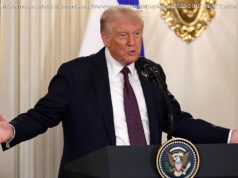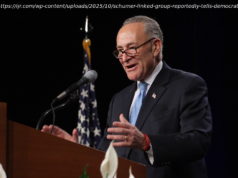The messaging could not have been more transparent. On Monday afternoon, days before US President Donald Trump and Russian leader Vladimir Putin meet face to face for the first time, tw
The messaging could not have been more transparent. On Monday afternoon, days before US President Donald Trump and Russian leader Vladimir Putin meet face to face for the first time, twin statues of Ronald Reagan and Mikhail Gorbachev were unveiled in Moscow.
The statues of the two statesmen credited with ending the last Cold War were a not particularly subtle call for Mr Trump and Mr Putin to channel their predecessors’ spirits when they meet at the G20 in Hamburg later this week.
Expectations could not be much lower. The Trump-Putin meeting in Hamburg tomorrow afternoon puts an end to an excruciating geopolitical guessing game.
Since the 45th US president entered the White House on January 20, Mr Trump and Mr Putin have manoeuvred around one another in a diplomatic cross between a Mexican standoff and the courtship of medieval monarchs.
They have spoken several times on the phone, sent foreign ministers to one another’s capitals, and engaged in an intricate game of diplomatic signalling and military muscle-flexing.
When Mr Trump fired Tomahawk missiles at Mr Putin’s Syrian allies, for example, he made sure to warn the Kremlin in advance; Moscow bitterly denounced the attack in public, but refrained from doing anything about it.
But for all the ritualised flirting, an anticipated early summit between the two presidents — perhaps, early leaks suggested, a replay of the Reagan-Gorbachev summit in «neutral» Reykjavik — failed to materialise.
Even tomorrow’s meeting feels more like a matter of duty than political will. As one Kremlin insider put it last month, if there is a G20 and the presidents of the US and Russia do not meet, it would look much stranger than if they did.
If that was not enough to dampen expectations, both administrations are tight-lipped about details of the engagement. A tentative schedule released by the Kremlin says the two men will meet for 15 minutes tomorrow — Mr Putin’s last engagement before a press conference.
The Kremlin also said this will be a «fully fledged seated meeting», not a choreographed handshake.
Dmitry Peskov, Mr Putin’s press secretary, has said the Kremlin would use the meeting to ask when Russia will get back two diplomatic compounds US authorities seized in 2016 — hardly the peak of geopolitical ambition.
Agenda
An educated guess says the two will also discuss Ukraine and Syria — the conflicts at the heart of the current US-Russia confrontation — and Mr Trump may bow to public pressure back home and complain about Russia’s alleged interference in the 2016 US election. The White House is briefing that there is «no fixed agenda».
So why meet at all? The long wait is partly down to domestic pressure on Mr Trump over alleged links between his campaign and administration with the Kremlin. But it also reflects the deep nature of the rifts between the US and Russia.
Put bluntly, the current relationship between Washington and Moscow is a tangle of red lines that neither leader can afford to surrender. Whatever happens in Hamburg, few are expecting the kind of statesmanship shown by Mr Reagan and Mr Gorbachev in Geneva more than 30 years ago. But if Mr Trump can restrain his hand-crushing instincts, and if Mr Putin sits up straight, it may signal a modicum of goodwill. And that might be enough for both sides for now. (© Daily Telegraph, London)






